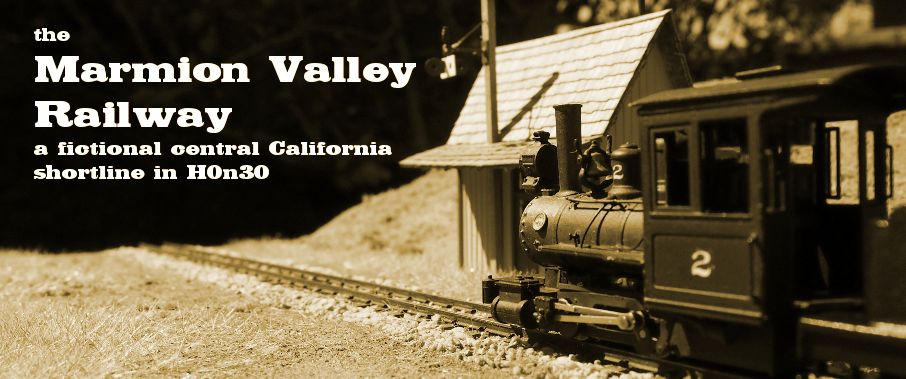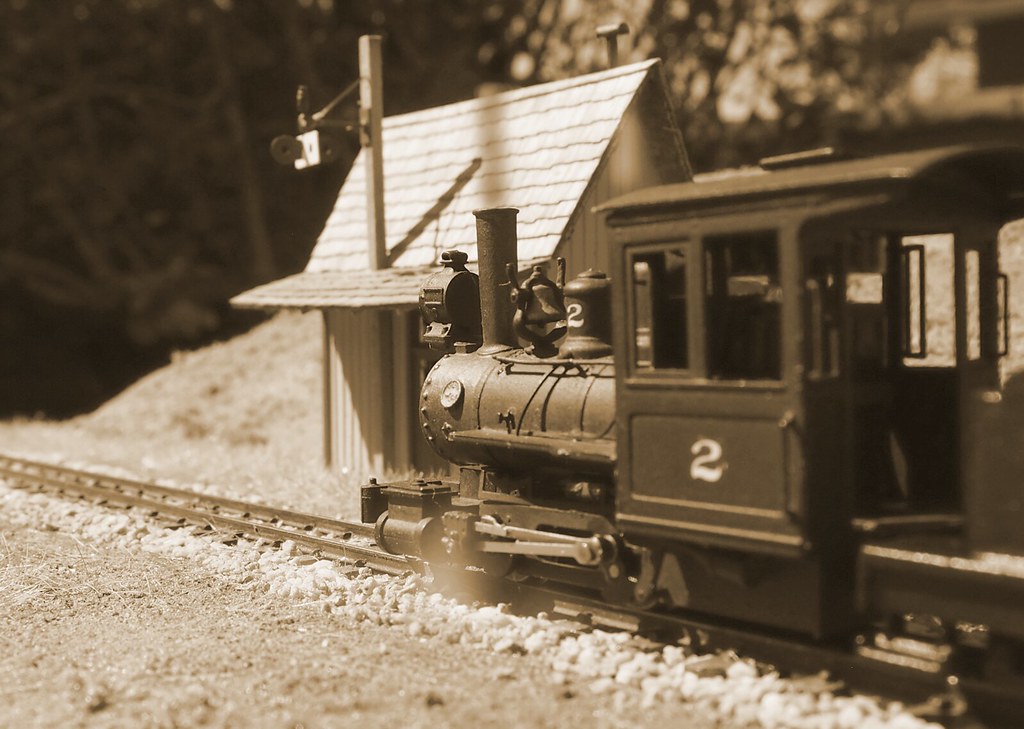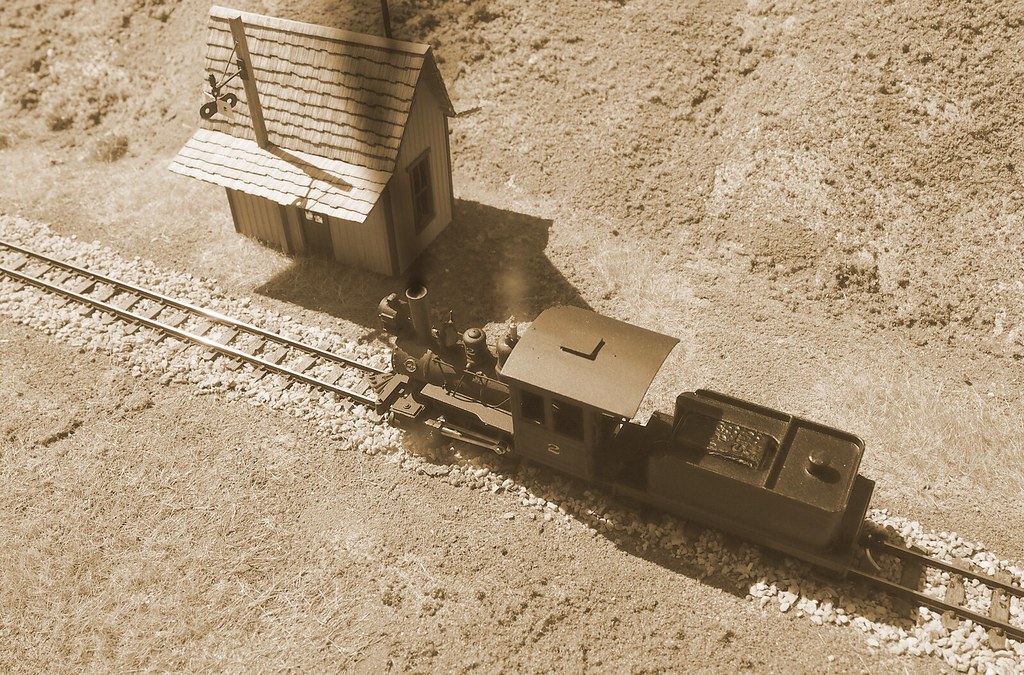I've handlaid many turnouts, all of them up to this point in N scale. One of the big reasons I got into HOn30 is the fact that most of my tracklaying tools can translate seamlessly from N.
I have a secret passion for handlaid track. Track is a model, and should be treated with the same attention to detail and integrity that we give to models of rolling stock and structures. More relevant to my interests is the quest to create "perfect" trackwork; let me explain.
In an idea model world, the rolling stock would glide along the rails and through complicated turnouts and crossovers with the same smooth implication of weight we see in the prototype. Nothing bugs me more than seeing my model rolling stock bouncing through frogs or wobbling over their truck bolsters like bobble head dolls. While there are several aspects to attacking this problem (more on that in another post), step one is trackwork that is constructed with very specific attention to clearances, consistency, and accuracy.
Here are a few tools that really help me in that particular quest:
I've written about it in other places, but this very simple jig helps me fabricate the perfect frog angle. It's just a piece of MDF, with a washer/wignut combo to hold the rails in perfect angle while they are soldered into a single unit. An accurate frog, constructed in this manner, is the heart of a smooth-running turnout.
Here's my other secret weapon: my Mini-Tool-Ginder from Harbor Freight. Best $20 I ever spent. It makes the work of filing point rails, frog angles, and point pockets go from minutes to seconds.
Generally, I knock down my basic rail dimensions with it, then adjust as needed with hand files and wet-dry sandpaper.
While this is the first turnout I've built in a while, I believe I got pretty close to perfect with the dimensions of the frog and wing rails. I'm also being a stickler about cleaning up/filing solder blobs, and I will be filling the gaps in the PCB ties to render them invisible. Little details like this really contribute to a polished, clean-looking finished product.
Another reason for building this turnout is to dry-run an idea that I've been wanting to try out for a while: a hinged throwbar.
I sanded the copper clading off of a PCB tie, then drilled two holes in it. I formed L-shaped "pins" from copper wire, then soldered them to the foot of the point rails. Since there is no cladding on the throwbar, the pins don't solder to it; rather, they "float" in the mounting holes.
Sorry, blurry pic:
Currently, it's not really working the way I want it to; the pins are slipping out and not actuating the points. Getting close, though; I think I need to tighten up the mounting holes.
While I don't have a specific use for this turnout at the moment, doing fabrication and engineering exercises like this is helping me narrow down my techniques for building better trackwork in the future. It's my plan to fabricate several to have on hand for a future HOn30 switching layout that is rumbling around in the back of my brain...
































